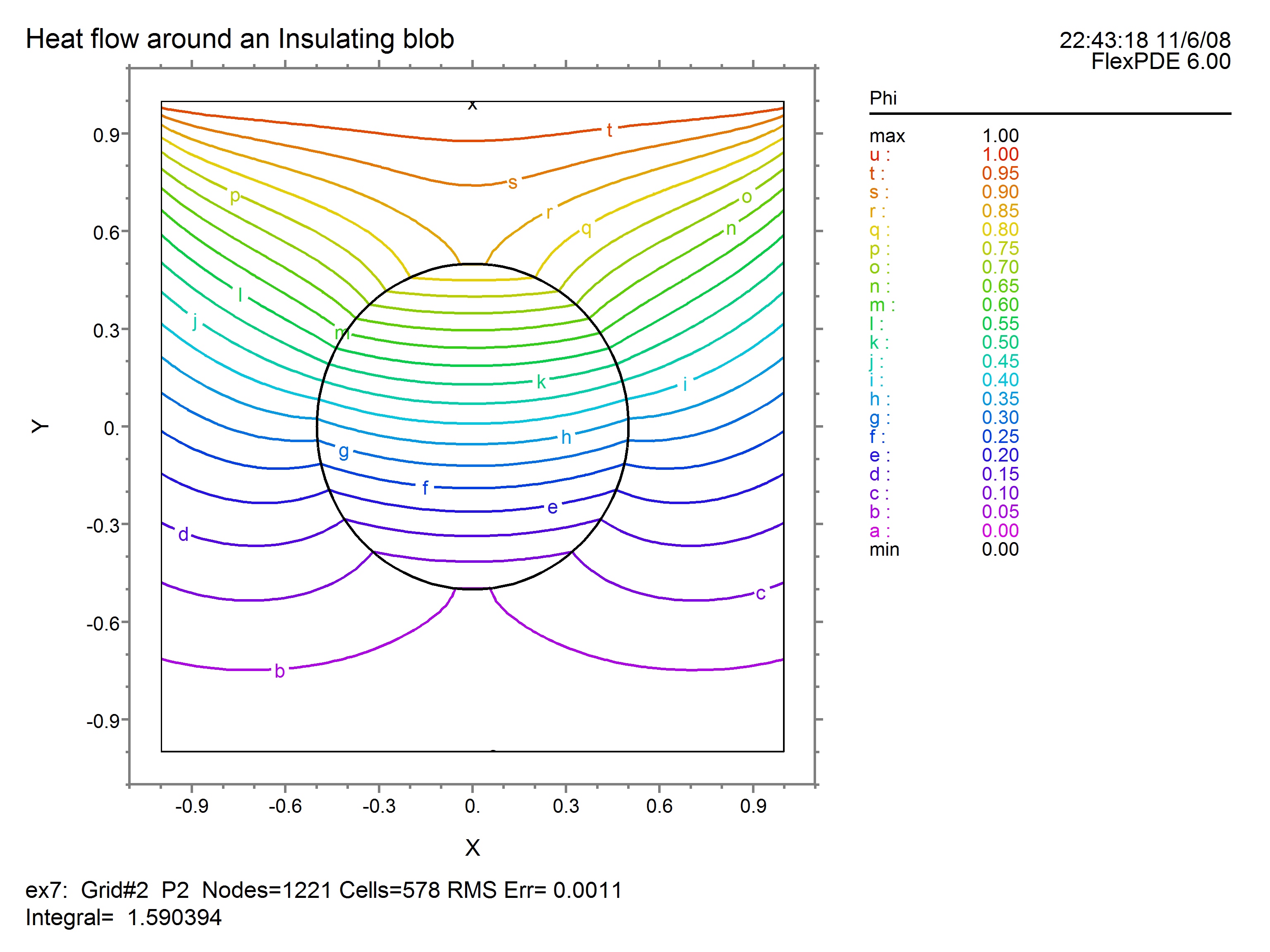|
<< Click to Display Table of Contents >> An Example of a Flux Boundary Condition |
  
|
|
<< Click to Display Table of Contents >> An Example of a Flux Boundary Condition |
  
|
Let us return again to our heat flow test problem and investigate the effect of the Natural boundary condition. As originally posed, we specified Natural(Phi)=0 on both sidewalls. This corresponds to zero flux at the boundary. Alternatively, a convective cooling loss at the boundary would correspond to a flux
Flux = -K*grad(Phi) = Phi – Phi0
where Phi0 is a reference cooling temperature. With convectively cooled sides, our boundary specification looks like this (assuming Phi0=0):
REGION 1 'box'
START(-1,-1)
VALUE(Phi)=0 LINE TO (1,-1)
NATURAL(Phi)=Phi LINE TO (1,1)
VALUE(Phi)=1 LINE TO (-1,1)
NATURAL(Phi)=Phi LINE TO CLOSE
The result of this modification is that the isotherms curve upward:
